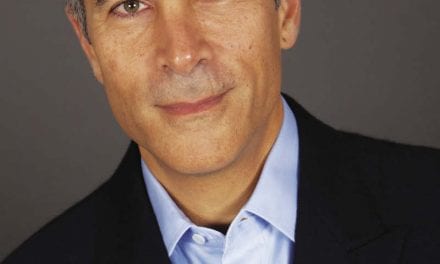Anil Shah, MD, FACS, a Chicago-based facial plastic surgeon, has treated hundreds of patients for hair loss and observed significant changes in hair restoration practices over the years. Below, Shah discusses the evolution of hair restoration techniques, emerging treatments, and advice for those considering hair restoration.
Plastic Surgery Practice: How have you observed societal perceptions of hair restoration evolve over the years?
Anil Shah, MD, FACS: I think when hair restoration first started, it was not a well-regarded procedure. The standard practice resulted in either a “plugged” look, where the hair grafts appeared obvious, or bizarre flaps that are rarely used today, such as the Juri flap. With the Juri flap, the hair pattern was altered, making it resemble a toupee. However, as with many things, a better understanding of anatomy has allowed hair restoration to achieve a more natural look.
Surgeons began using smaller grafts called follicular units. Furthermore, as evidenced by many celebrities, a properly planned hairline can make someone look significantly younger and frame the face in a way that enhances attractiveness and youthfulness. With advancements in technology, the use of robotics has further revolutionized hair restoration, enabling precise planning, harvesting, and even site-making for patients.
PSP: What are the differences between follicular unit extraction (FUE) and follicular unit transplantation (FUT), and why might one be preferred over the other?
Shah: FUT is commonly known as strip surgery. This is where a linear scar is made on the back of the head to harvest hair. This surgery has received a bad reputation due to rogue surgeons who may not use proper techniques. With proper facial plastic techniques, the scar from the harvested hair can look like a very thin line, imperceptible in a patient with hair longer than 2 mm.
For those patients who wish to have a shorter hairstyle, FUE may play a role. FUE is where hair is harvested individually from the back of the head. This is sometimes known as scarless hair harvesting. However, this is also a misnomer, as patients can have small marks of hypopigmentation. In addition, hair can be overharvested, leaving a sparse posterior head of hair. In my practice, I offer both treatments to patients. For patients who wear their hair short, FUE can be advantageous. For patients who have longer hair, FUT may be more beneficial. And for patients with extensive hair loss, they may benefit from a combination of both over multiple sessions.
PSP: What role does PRP therapy play in hair restoration, and who would be the ideal candidate for this treatment?
Shah: PRP helps supply growth factors to hair. Since hair is considered a non-vital organ, it can undergo permanent death through senescence. PRP provides growth factors that help prevent this premature process. These growth factors “trick” the hair into behaving as though it is younger. Multiple PRP sessions—typically at least six—are often required to see significant results. PRP is an excellent option for addressing female hair loss, early hair loss, and supporting nearly all patients with some degree of hair loss.
PSP: How do nutraceuticals like biotin and medical treatments like finasteride complement surgical hair restoration procedures?
Shah: Biotin actually plays a very minor role in supporting hair health. Several studies have examined biotin, and its inclusion in hair care products is primarily due to its association with hair rather than strong scientific evidence.
Finasteride, on the other hand, is a powerful DHT blocker. It prevents hair from undergoing premature miniaturization, which can lead to permanent hair loss—a hallmark of androgenic alopecia, the most common cause of hair loss worldwide. Finasteride also has the added benefit of shrinking the prostate and has even been shown to potentially increase lifespan.
However, it’s not all upsides (pun intended). Some men may experience erectile dysfunction, and others may notice a decrease in libido. Choosing the right supplements or pharmaceuticals requires an in-depth conversation with a hair loss specialist to determine the best option for your specific needs.
PSP: Can you elaborate on the potential of emerging treatments like senolytics and red light therapy in combating age-related hair loss?
Shah: Perhaps the most underrecognized source of hair loss is senescence. Our hair, like all other cells in the body, eventually ages and perishes. Senolytics are among the most exciting advancements in supplements. As we age, our bodies accumulate more “zombie cells”—damaged cells that fail to die off and instead promote aging and degeneration in neighboring cells, much like a rotten apple spoiling the bunch.
Senolytics are supplements and medications that help eliminate these zombie cells. Many of these products are widely available, including on platforms like Amazon. Some of my favorites include fisetin and quercetin. However, there are many other options, many of which I personally use and tailor to each patient to enhance their overall function and, by extension, their hair health.
Photobiomodulation, also known as low-level light therapy, particularly around 660 nm, can be applied to the scalp to encourage hair growth. Red light therapy is effective in reducing oxidative stress, improving mitochondrial function, and offering a range of additional health benefits. However, I find that red light caps can become quite hot and may not penetrate the scalp as effectively as desired. For most of my patients, I recommend red light therapy in the setting of a sauna. Exposing the skin, including the scalp, to red light in this context increases the surface area affected, providing systemic benefits. Hair loss is just one of the many parameters that can be improved. Additionally, saunas offer numerous health benefits, including improved vascular function, enhanced longevity, and overall well-being.
PSP: What advice would you give to someone considering hair restoration but hesitant due to stigma or lack of information?
Shah: If you are considering hair restoration, you should act now. Once you experience hair loss, no regenerative effort or pharmaceutical supplement will fully restore your lost hair. The best way to treat hair loss is to prevent it. Focus on improving your overall health while addressing your hair at the same time.
If you already have substantial hair loss and are a male, consider undergoing a hair transplant procedure sooner rather than later. By the age of 25, most men’s hair loss patterns and the extent of hair loss become more predictable. Treating hair loss early with smaller procedures and adopting preventative lifestyle changes can help ensure you maintain a full head of hair while also supporting a healthy, fulfilling life.




